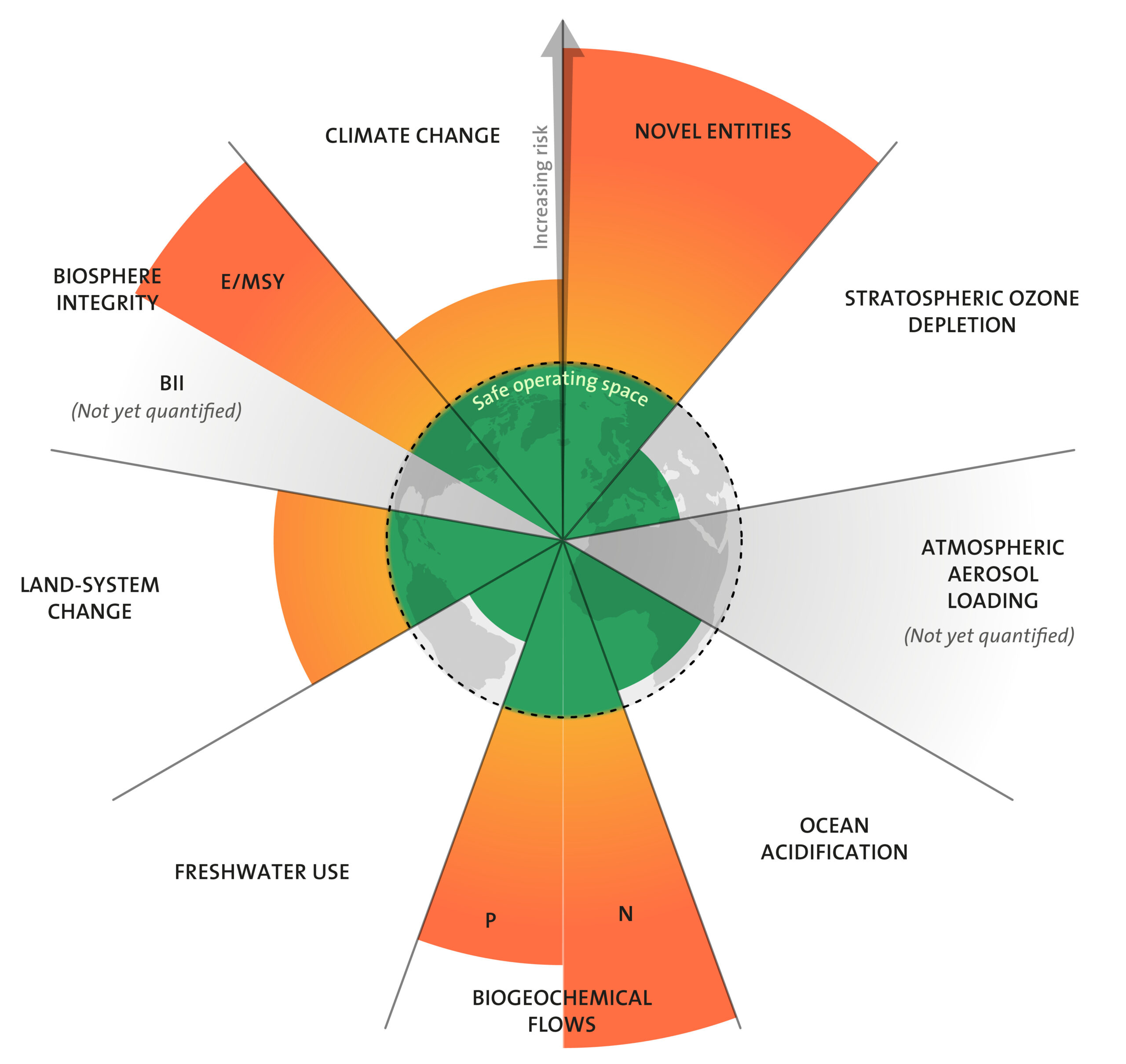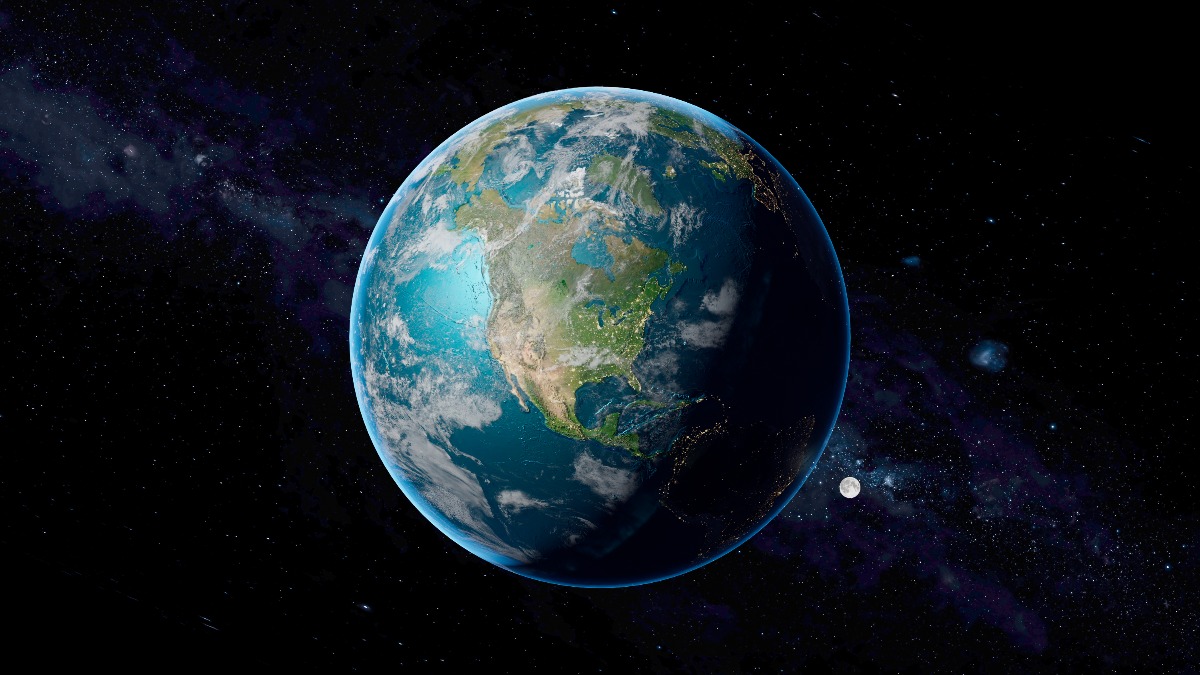Hi everyone, we’re about to complete our journey of 21 Days of Climate Consciousness. Here, we have got the second last challenge for you!
The planetary boundaries are a set of nine limits that define the safe operating space for humanity. They were first proposed in 2009 by a group of scientists at the Stockholm Resilience Centre, and they have since become a widely used framework for understanding the impacts of human activity on the Earth system.
Here, we have a brief overview of the nine boundaries:
- Climate Change: The boundary relates to the concentration of greenhouse gases in the atmosphere and the resulting global temperature increase.
- Biodiversity Loss: This boundary focuses on the rate of species extinction and the loss of ecosystems, highlighting the importance of maintaining biodiversity for ecological resilience.
- Nitrogen and Phosphorus Cycles: It addresses the excessive release of nitrogen and phosphorus into ecosystems, which can lead to water pollution and ecosystem degradation.
- Land System Change: This boundary emphasizes the need to preserve natural habitats and reduce deforestation, as well as promote sustainable land-use practices.
- Freshwater Use: It highlights the sustainable management of freshwater resources and the potential risks associated with excessive water consumption.
- Ocean Acidification: This boundary examines the impact of increasing carbon dioxide levels on ocean acidity, which can harm marine ecosystems and their ability to adapt.
- Stratospheric Ozone Depletion: It focuses on the protection of the ozone layer and the reduction of substances that deplete it, such as chlorofluorocarbons (CFCs).
- Chemical Pollution: This boundary addresses the risks associated with synthetic chemicals, including their potential harm to human health and ecosystems.
- Air Pollution: It focuses on reducing air pollutants, such as particulate matter and nitrogen oxides, to improve air quality and minimize associated health and environmental impacts.

We have already crossed five of the nine planetary boundaries: climate change, novel entities, biosphere integrity, land-system change, and nitrogen and phosphorus cycles. This means that we are operating in a risky zone, and we need to take urgent action to reduce our impact on the planet.
The consequences of crossing planetary boundaries can be severe. For example, climate change is already leading to more extreme weather events, such as heat waves, droughts, floods, and wildfires. Ocean acidification is harming marine life, and it could eventually lead to the collapse of important fisheries. Loss of biodiversity is undermining the resilience of ecosystems, and it could lead to the spread of diseases.
The good news is that we still have time to act. By reducing our emissions, protecting biodiversity, and managing our resources more sustainably, we can still avoid crossing the remaining planetary boundaries.
Here are some things we can do to protect the planet:
- Reduce our emissions of greenhouse gases. This can be done by switching to renewable energy sources, improving energy efficiency, and reducing our reliance on fossil fuels.
- Protect biodiversity. This can be done by conserving natural habitats, reducing pollution, and sustainable use of resources.
- Manage our resources more sustainably. This means using resources more efficiently and reducing waste.
- Change our lifestyles. We need to change our lifestyles to reduce our impact on the environment. This includes making changes to our diet, transportation, and consumption habits.
- Invest in research and development. We need to invest in research and development to find new ways to reduce our impact on the environment. This includes developing new technologies, such as renewable energy sources and carbon capture and storage.
The future of our planet depends on us. By taking action now, we can create a more sustainable future for ourselves and for generations to come.
To create meaningful change, we need everyone on board, including young people who can lead the way toward systemic action. We often talk about three levels of action:
- Personal: Taking individual steps like reducing plastic usage, conserving energy at home, or practicing sustainable consumption.
- Collective: Organizing group activities such as community clean-ups, tree planting drives, starting petitions to raise awareness and advocate for change, or organizing awareness campaigns in social media, schools, and neighborhoods.
- Systemic: Engaging in higher-level actions like signing petitions, advocating for sustainable policies, or discussing environmental issues with local government leaders.
While personal actions are straightforward, collective and systemic actions require more effort. Understanding our role in influencing systemic change can be challenging.
By embracing all three levels of action, we can drive the transformation needed for a sustainable future. Whether it’s through personal choices, organizing collective efforts, or actively participating in systemic change, every contribution matters. Together, we can make a difference and inspire others to join us on this vital journey.
💪 The challenge of the day:
So the action for you is:
1️⃣ Think of an idea and make a blueprint for a collective action you wish to lead in your local community or online. It can be small, it can be big, but it should involve other people.
2️⃣ Think about how you could influence climate policy or negotiations. Have you been involved in these processes before? Do you want to? Or maybe, for now, you have no idea how it works.
✍️ We look forward to reading your plans and seeing how we can collaborate. If you create some visual drafts using Google Docs or Slide, share the accessible like to that in the comment.
🔊 Let’s wrap up with this quote from Greta Thunberg: “I have learned that you are never too small to make a difference. The one thing we need more than hope is action. Once we start to act, hope is everywhere. So instead of looking for hope, look for action. Then, and only then, hope will come.”

